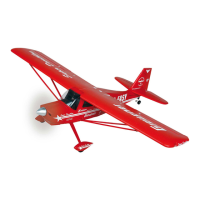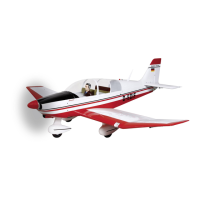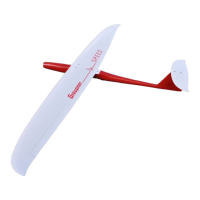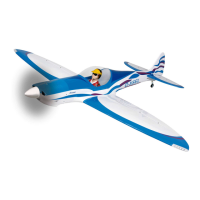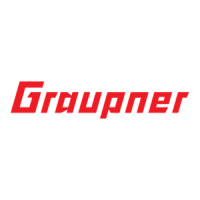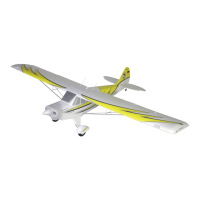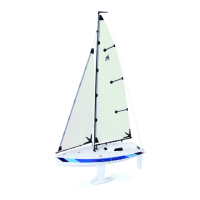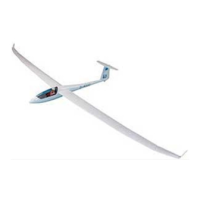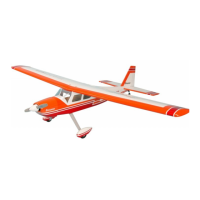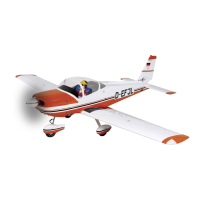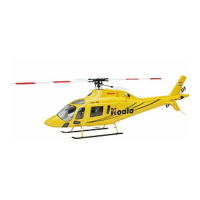GRAUPNER GmbH & Co. KG D-73230 KIRCHHEIM/TECK GERMANY
Modifications reserved. No liability for printing errors. Id. No. 0062611 9/2011
- 4 -
This photo shows the HoTT GR-12S receiver and the completed BEC connection
between the speed controller and the LiPo battery. The receiving system is switched
on and off by connecting and disconnecting the BEC plug and socket.
Control surface travels
We recommend the following maximum travels, in each case measured at the trailing
edge of the control surface: rudder 18 mm to either side of neutral, elevator 6 mm up
and down. The correct travels can be set at the transmitter; please refer to your HoTT
COMPUTER SYSTEM manual for information on this process.
Balancing
Assemble the model completely, ready to fly. The Centre of Gravity range is 62 to 72
mm aft of the wing root leading edge. Support the model at the stated CG position
with two fingers under the wing roots, and allow it to hang freely: the fuselage will
remain level when the model is balanced correctly.
Flying
If you are a beginner to this type of model flying, we recommend that you enlist an
experienced model pilot to help you check and test-fly the model.
Wait for a day with little or no breeze for the initial test-flight. The ideal flying site is a
flat grassy field with a gentle slope facing into wind. Never launch the model between
buildings or trees, as the air will be turbulent, making the aeroplane difficult to control.
The first flight should be a hand-glide, carried out with the motor pylon removed.
Simply “push” the model forward into the wind - don’t throw it. Trotting forward for a
few steps gains the necessary momentum. For hand-gliding the nose should be ang-
led down slightly (about 5°).
You will undoubtedly need to trim the model, especially after the first launch; fine-
tuning can be carried out by adjusting the trim buttons situated below and adjacent to
the transmitter sticks. When the model is gliding well, fit the motor pylon for a
powered flight. Again “push” the model into wind after trotting forward. However, the
fuselage nose should now be inclined up slightly (approximately 10°) for launching.
Always land the model directly into wind, with the motor switched off. Just before
touch-down, apply slight up-elevator to flare out and slow the machine down further.
Always land directly into wind.
All of us at GRAUPNER Modellbau wish you many fine flights with your new
DISCUS 2CT
